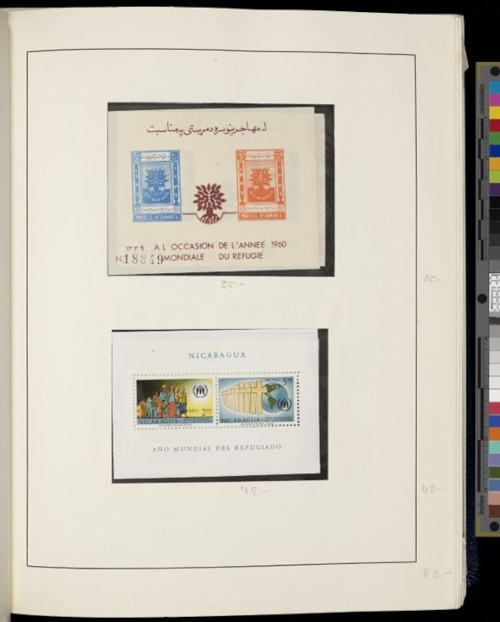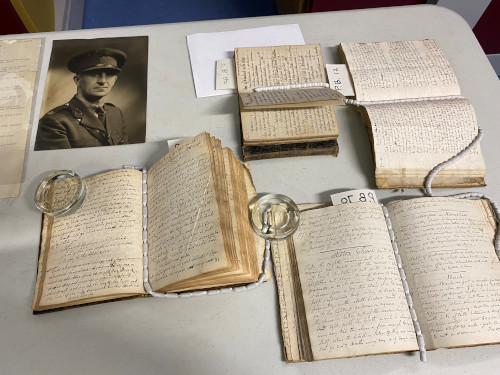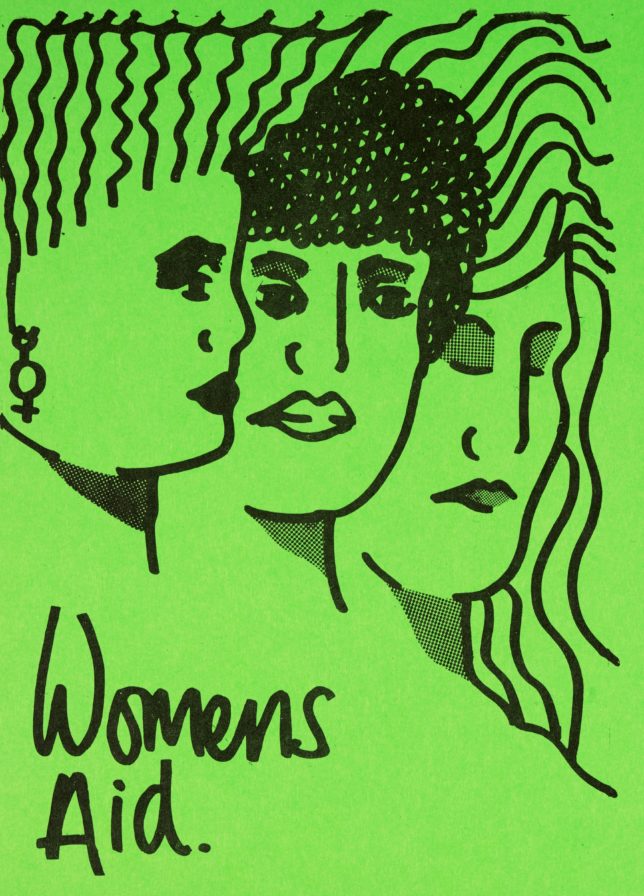Archives Hub feature for August 2024
As many a TV presenter, veterinarian or teacher will tell you, working with children or animals is never without some form of event. Inspired by both the ideas of working animals and how children are influenced by literature and media, this trip into Archives Hub will focus on both!
Animals have been bred for specific jobs for hundreds of years, from Border Collie sheepdogs in rural areas to German Shepherd police dogs in cities.
Police dogs specifically have their own entry in the Hub, in the Records of the Association of Chief Police Officers: Minutes of the Police Dog Sub-Committee and Police Dogs Working Group. This file is part of a wider Police Dog Sub-Committee in the Hull University Archives, Hull History Centre: http://archiveshub.jisc.ac.uk/data/gb50-udpo/udpo/2/5/14

Sticking with more domestic animals, dogs are not the only species with jobs. Horses have had many occupations, from colliery horses, horse drawn transport and working at mills:
- The National Coal Board photographic collection contains photographic material on a variety of physical media, including prints, glass plate negatives, plastic negatives, photograph albums, lantern slides and transparencies. The material depicts collieries and other scenes, including working colliery horses, from across the south Wales coalfield: [Bath Coal Company], horse-drawn coal delivery wagon. This photographic collection is part of the National Coal Board records held at Glamorgan Archives: http://archiveshub.jisc.ac.uk/data/gb214-dncb
- The Explore York Archives hold details of tramway proposals in York and photostats of Tramway Order Acts from the late 19th Century – all under horsepower: Horse Trams – Transport papers. These documents make up the wider Transport papers collection in the Hugh Murray archive: http://archiveshub.jisc.ac.uk/data/gb192-hmu
The Mills Archive contains a series of digital photographs (with higher resolution versions available on request), including those of horses working on a pump engine!: Yorkshire mills, north Wales quarries, horse mills . This folder is included in the Roy Gregory Collection: http://archiveshub.jisc.ac.uk/data/gb3132-royg

And we simply can’t ignore the presence of circus or fairground animals within the archives, with The National Fairground Archive containing descriptions of working animals in circus grounds, or featuring in their posters: NFA Poster collection.
Also, another repository features photographs of elephants being trained alongside horses for the circus in the early 20th Century – a particular highlight!: Training by Kindness. These photographs are part of the Roslin Slide collection, held by the Edinburgh University Library Special Collections: http://archiveshub.jisc.ac.uk/data/gb237-coll-1434
When there are thoughts of circuses, there are often thoughts of children in the audience. And it is media influences on children documented in the archives that we shall move onto next. There are two specific areas Archives Hub covers particularly well: television broadcasting and literature.

The BBC Written Archives Centre has a great selection of papers relating to different children’s programming spanning decades, with it being clear where there are often animals, there will be some form of them featuring in a broadcast for children. As will be of no surprise, there are a great number of files surrounding Blue Peter!
- Children’s Programmes – These papers relate to the creation, production and broadcast of children’s television programmes of various types and genres, including talks programmes, documentaries, outside broadcasts, series and serials, puppet shows, stories, plays, cartoons, child participation and magazine programmes. This makes up the British Broadcasting Corporation (BBC) collection of the BBC Written Archives Centre: http://archiveshub.jisc.ac.uk/data/gb898-bbc
Likewise, two of our Hub contributors include dedicated children’s literary archives. The first of these is the aptly named Children’s Literature Collection, held by the University of Roehampton Archives and Special Collections. This collection comprises of published books and resources relating to children’s literature. Including 40 children’s literature journals, reference works such as “Children’s Literature Review”, biography and autobiography of children’s authors and illustrators. Also, children’s books of historical interest and significance, mainly from the 19th and early-20th Centuries are present alongside adaptations of children’s books into film, TV and audio: Children’s Literature Collection.
The second is the Seven Stories Archive, containing works from over 250 authors and illustrators, with over 36,000 texts present: Seven Stories Archive.
- Some highlights include the Phillip Pullman collection and the Judith Kerr collection – so you can simultaneously research the magical Oxford of His Dark Materials and the misadventures of Mog the Forgetful Cat!

Results relating to children’s media is not limited to specialised archives, with much available to those looking at one specific work – for example The Wind in the Willows, which has been adapted to multiple genres and is found in the following very different archives:
- The V&A Theatre and Performance Collections contains the following script for the adaptation to stage by Alan Bennet from the early 1990s: Script for The Wind in the Willows by Kenneth Graham. This script is part of the larger The Derek Smee Collection: http://archiveshub.jisc.ac.uk/data/gb71-thm/451
- The University of Salford Archives & Special Collections contains the Roy Newsome Brass Band Archive, with a 1985 score for a suite by Mervyn Burtch: Wind in the Willows – Modern Repertoire Scores. This score is one of many papers that make up the Roy Newsome Brass Band Archive: http://archiveshub.jisc.ac.uk/data/gb427-rna
Needless to say, working with children or animals is well documented in the archives – though they may not offer much advice on avoiding mishaps!
Previous features on similar topics
- Fish are jumpin’ in the Archives
- William Speirs Bruce Archive in the National Museums Scotland Library
- Comic strips and seaside holidays: unexpected stories from the Save the Children Archive
- The Basque child refugee archive
- Papers of the Association of Chief Police Officers – the National Reporting Centre
- Birth of a Broadcasting Institution: British Broadcasting Company Papers and Reith Diaries at the BBC Written Archives Centre
















































